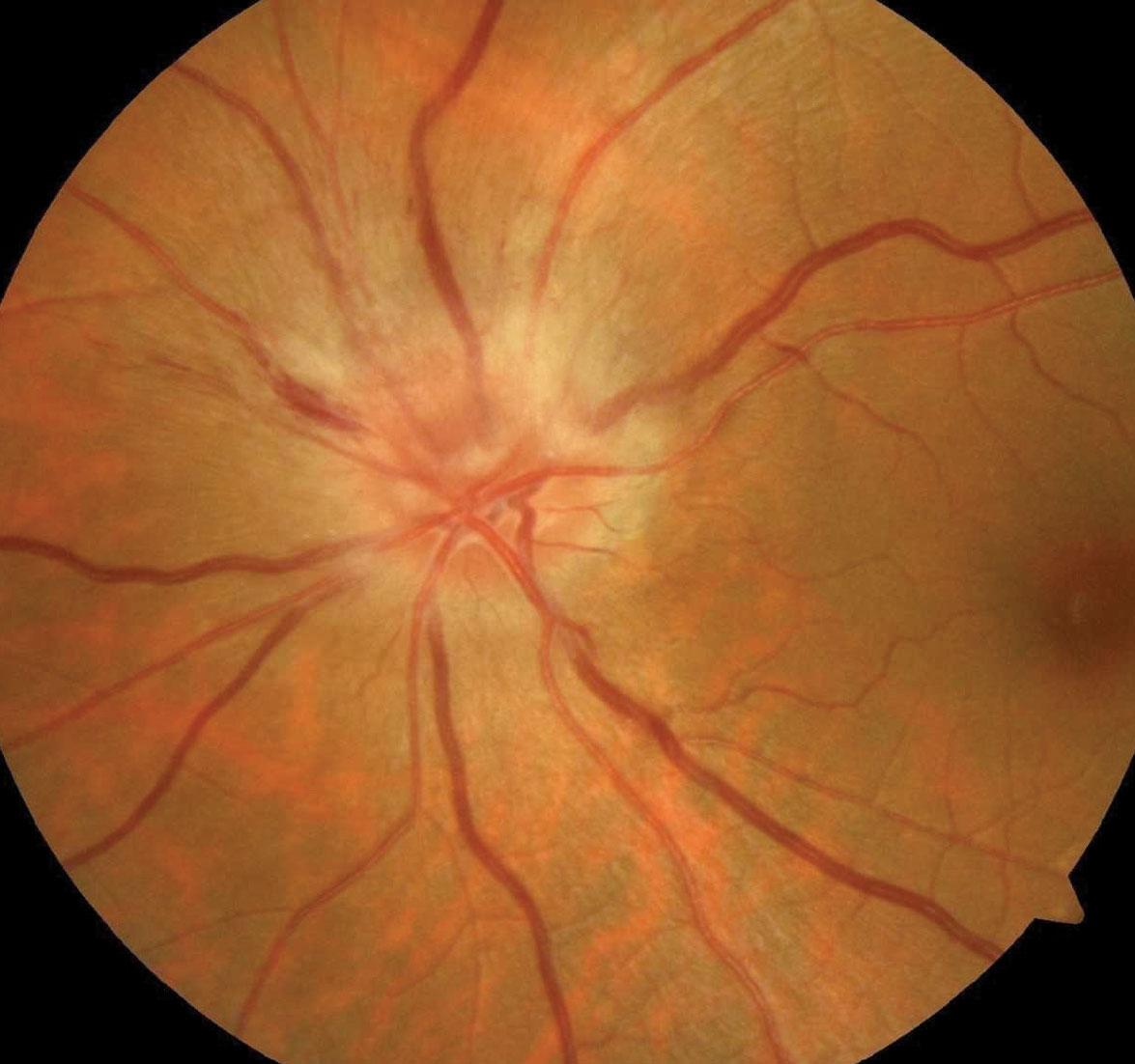 |
| A retrospective population study maintains that patients age 50 and older are at higher risk for nonarteritic anterior ischemic optic neuropathy while incidence rates have been stable across four decades. Photo: Neil Miller, MD. Click image to enlarge. |
Considered to be the most common cause of acute optic nerve-related vision loss in patients over age 50, nonarteritic anterior ischemic optic neuropathy (NAION) is a multifactorial disease linked to a combination of system and ocular risk factors. Some of these are thought to include systemic hypertension, diabetes mellitus, obstructive sleep apnea and hyperlipidemia, which have been reported as increasing in the American population in recent decades. However, a new retrospective study may dispel the correlation between the rise in risk factors with an uptick in NAION incidence.
Researchers used the database from the Rochester Epidemiology Project, which encompassed patients diagnosed with an optic neuropathy from January 1990 to December 2016 and who received care in Olmsted County, Minnesota. A total of 1,791 patients were identified with optic neuropathy, of which 104 were diagnosed with NAION. Median age at diagnosis was 65 years, and 59 patients were male. The incidence of NAION in patients 40 years or older was 7.73 (per 100,000) and 10.19 in patients 50 and older. The highest incidence was noted in the 80-89 age bracket: 14.56 per 100,000 for females and 26.09 per 100,000 for males.
This data is consistent with a prior Rochester Epidemiology Project study conducted between 1980 and 1990 in which the NAION incidence rate was 10.2 in patients 50 and over, indicating its stability over a 40-year span, in spite of the associated risk factors found in the patient population, including hypertension (79.8%), diabetes mellitus (39.4%), obstructive sleep apnea (23.1%) and hyperlipidemia (74%).
Other previous reports were also confirmed with this study. “A small cup-to-disc ratio is a well-established ocular risk factor for the development of NAION, likely due to compartment syndrome in the region of the lamina cribrosa,” stated the authors. “Our study confirms this with a median cup-to-disc ratio of 0.2. Our study also confirms an altitudinal defect as the most common visual field defect.”
The authors recognized the strengths of their study, such as its population-based setting that allowed for incidence calculation with avoidance of referral bias and the ability to confirm the diagnoses of NAION by manual review of the medical records, but the racial homogeneity of the primarily Caucasion population in Olmstead County was a limitation.
“In addition, the retrospective nature of our study inevitably resulted in some patients having limited follow-up data,” they said. “This could have potentially skewed toward worse visual outcomes because patients who were stable or improved may have chosen not to follow-up. Finally, our categorization of vascular risk factors as discrete variables did not allow for consideration of the severity of these risk factors in individual patients.”
Nevertheless, this study shows there hasn’t been a dramatic increase in NAION diagnoses in this population and maintains that those 50 and older are at the most risk.
Foster RC, Bhatti MT, Crum OM, Lesser ER, Hodge DO, Chen JJ. Reexamining the incidence of nonarteritic anterior ischemic optic neuropathy: A Rochester Epidemiology Project Study. J Neuroophthalmol. February 15, 2024. [Epub ahead of print.] |

